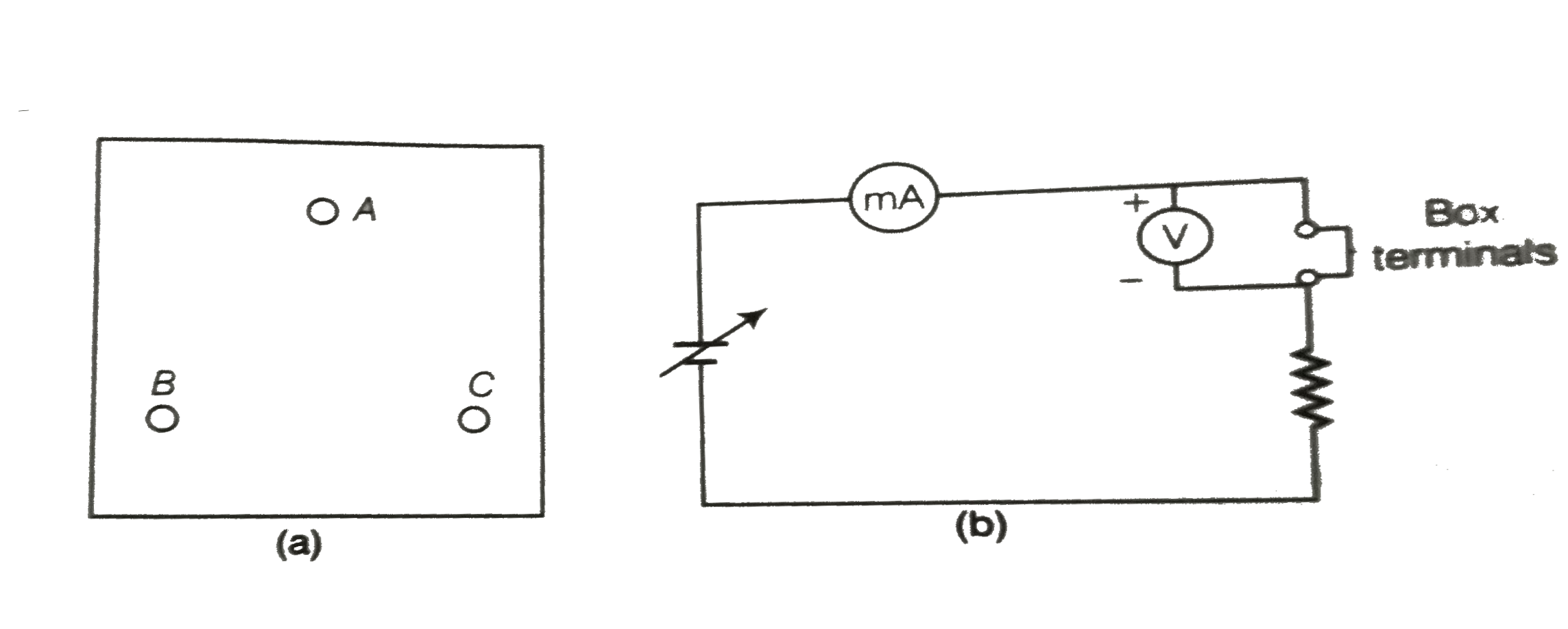P−V diagram of a cyclic process ABCA is as shown in Fig. Choose the correct alternative

(A)ΔQA→B= negative
(B)ΔUB→C= positive
(C)ΔUC→A= negative
(D)ΔWCAB= negative
ΔQA→.B is negative
ΔUb→.c is negative
ΔUc→.A is negative
ΔWCAB is negative
The correct Answer is:A, B, D
During process A and B, pressure and volume both are decreasing. Therefore , temperature and hence internal energy of the gas will decrease (T∝PV) or ΔVA→B= negative. Further, ΔWA→B is negative.
In processs B to C, pressure of the gas is constant while volume is increasing . Hence, temperature should increase or ΔUB→C= postive. During C to A volume is constant while pressure is increasing.
Therefore, temperature and hence internal energy of the gas should increase or ΔUC→A= positive. During process CAB, volume of the gas is decreasing. Hence, work done by the gas is negative.
Topper's Solved these Questions
- KINETIC THEORY OF GASES AND FIRST LAW OF THERMODYNAMICSBOOK - CENGAGE PHYSICS ENGLISHCHAPTER - KINETIC THEORY OF GASES AND FIRST LAW OF THERMODYNAMICSEXERCISE - Assertion-Reasoning
6 Videos
- KINETIC THEORY OF GASES AND FIRST LAW OF THERMODYNAMICSBOOK - CENGAGE PHYSICS ENGLISHCHAPTER - KINETIC THEORY OF GASES AND FIRST LAW OF THERMODYNAMICSEXERCISE - Comprehension
56 Videos
- KINETIC THEORY OF GASES AND FIRST LAW OF THERMODYNAMICSBOOK - CENGAGE PHYSICS ENGLISHCHAPTER - KINETIC THEORY OF GASES AND FIRST LAW OF THERMODYNAMICSEXERCISE - Single Correct
140 Videos
- KINETIC THEORY OF GASESBOOK - CENGAGE PHYSICS ENGLISHCHAPTER - KINETIC THEORY OF GASESEXERCISE - Compression
2 Videos
- LINEAR AND ANGULAR SIMPLE HARMONIC MOTIONBOOK - CENGAGE PHYSICS ENGLISHCHAPTER - LINEAR AND ANGULAR SIMPLE HARMONIC MOTIONEXERCISE - Single correct anwer type
14 Videos
Similar Questions
In the (p - V) diagram shown in figure, choose the correct options for the the process (a - b) :
 .
.
View SolutionA point charge Q is placed at the point O as shown in Fig. Is the potential difference (V)A−VB) positive, negative or zero if Q is (i) positive (ii) negative ?

View SolutionA point charge Q is placed at the point O as shown in Fig. Is the potential difference (V)A−VB) positive, negative or zero if Q is (i) positive (ii) negative ?

View SolutionIf a, b, c are positive and unequal, show that value of the determinant Δ=|abcbcacab|is negative.
View SolutionWhich of the following is true during adsorption?
a. ΔG , ΔH , and ΔS all are negative.
b. ΔG is negative, but ΔH and ΔS is positive.
c. ΔG and ΔH are negative, but ΔS is positive.
d. ΔG and ΔS are negative, but ΔH is positive.
View SolutionAn ideal gas undergoes an expansion from a state with temperature T1 and volume V1 through three different polytropic processes A,B and C as shown in the P−V diagram. If |ΔEA|,|ΔEB| and |ΔEC| be the magnitude of changes in internal energy along the three paths respectively, then :

View SolutionApply the first law of thermodynamics to a resistor carrying a current i. Identify which of the quantities ΔQ, Delta U and DeltaW are zero, wheich are positive and which are negative.
View SolutionChemical reactions are invariably associated with the transfer of energy either in the form of hear or light. In the laboratory, heat changes in physical and chemical processes are measured with an instrument called calorimeter. Heat change in the process is calculated as: q= ms ΔT, s= Specific heat = cΔT= Heat capacity. Heat of reaction at constant pressure is measured using simple or water calorimeter. Qv=ΔU= Internal energy change, QP=ΔH,QP=QV+PΔVandΔH=ΔU+ΔnRT. The amount of energy released during a chemical change depends on the physical state of reactants and products, the condition of pressure, temperature and volume at which the reaction is carried out. The variation of heat of reaction with temperature and pressure is given by Kirchoff's equation: ΔH2−ΔH1T2−T1=ΔCP (At constant pressure), ΔU2−ΔU1T2−T1=ΔCV (At constant volume)
The enthalpy change (ΔH) for the reaction N2(g)+3H2(g)→2NH3(g) is −92.38kJ at 298 K. The internal energy change ΔU at 298 K is
View SolutionChemical reactions are invariably associated with the transfer of energy either in the form of hear or light. In the laboratory, heat changes in physical and chemical processes are measured with an instrument called calorimeter. Heat change in the process is calculated as: q= ms ΔT, s= Specific heat = cΔT= Heat capacity. Heat of reaction at constant pressure is measured using simple or water calorimeter. Qv=ΔU= Internal energy change, QP=ΔH,QP=QV+PΔVandΔH=ΔU+ΔnRT. The amount of energy released during a chemical change depends on the physical state of reactants and products, the condition of pressure, temperature and volume at which the reaction is carried out. The variation of heat of reaction with temperature and pressure is given by Kirchoff's equation: ΔH2−ΔH1T2−T1=ΔCP (At constant pressure), ΔU2−ΔU1T2−T1=ΔCV (At constant volume)
The specific heat of I2 in vapoour and solid state are 0.031 and 0.055 cal/g respectively. The heat of sublimation of iodine at 200∘C is 6.096 kcal mol−1. The heat of sublimation of iodine at 2500C will be
View SolutionConsider a box with three terminals on top of it as shown in figure.

Three components namely, two germanium diodes and one resistor are connected across these three terminals in some arrangement
A student performs an experiment in which any two of these three terminals are connected in the circuit shown in figure.
The student obtains graphs of current-voltage characteristics for unknown combination of components between the two terminals connected in the circuit. The graphs are
(i) When A is positive and B is negative

(ii) When A is negative and B is positive

(iii) When B is negative and C is positve

(iv) When B is positive and C is neagtive

(v) When A is positive and C is negative

(vi) When A is negative and C is positive

From these graphs of current − voltage characteristic shown in fig. (c) to (h) determine the arrangement of components between A, B and C.
View Solution
